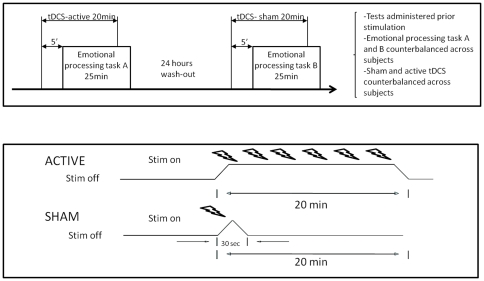Figure 1. Experimental design.
Each subject underwent sham and active stimulation on two different days in a counterbalanced design (see panel A). Two equivalent emotional processing tasks were used (A and B in the figure), which were randomized within subjects. For real tDCS, 20 min of 1mA was continuously applied whereas for the sham stimulation the current stimulator was turned only during the first 30 seconds, to mimic the somatic sensations without actually affecting the underlying cerebral cortex (see panel B).

